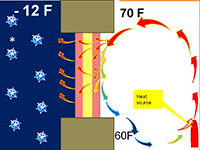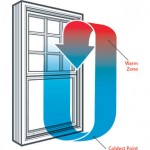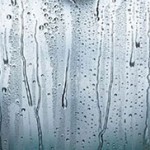FAQ
- Q?How much time should I allow for the installation of porch enclosure?
-
A.
The type of porch enclosure being installed and type being removed help determine the amount of time needed to complete the job. On average it takes about 2 hours. Cleanup will require additional time to complete. An average job will take 3-4 hours.
- Q?What’s the difference between a three-season porch enclosure, and a four-season porch enclosure?
-
A.
One of the terms that you hear if you’re looking to have your porch area enclosed is if you will have a three-season or four-season porch enclosure built. The logic behind this question is simple: if you will be using the enclosed porch area as a true living space, then you will have to consider how weatherproof and insulated the construction will be. This is particularly important if your local area does experience a winter season.
Construction-wise, this will mean that the type of glass and walls that you will use should be able to retain heat in cold weather to within the specifications required by local building codes. Alternatively, this also means that in other climate types, your enclosure should also be able to withstand the external environment, such as exposure to sunlight, heat, and rain.
As it is, your intent on making the enclosed porch a true living space, and the cost of it will determine if you will use building materials and codes that will qualify it as a year-round usable living area.
- Q?How do I keep the rain out of my porch?
-
A.
When you’re building your porch enclosure, make sure the floor is sloped correctly to prevent standing water. Although this won’t keep water from entering your porch, it can reduce the damage water causes to the contents of your porch by draining water away. Ideally, the floor should create a slight peak in the center so all water drains out the edges of the porch.
- Q?Can replacement windows and doors be installed in the winter?
-
A.
Yes, absolutely. Replacement windows and doors can be installed in the winter.

To prevent heat loss, Vinyl-Pros installers take proper precautions by installing one window at a time. The windows or doors that we make for your home come already assembled from the factory and ready to install. Not only that but they are custom fitted to the size and shape of your existing opening in the wall, meaning that after removing the old window or door, the new one can go into the rough opening within a couple of minutes. This minimizes the time the old window/door is out of your home and before your new replacement window is installed. The out time for your window, if installed properly, should be no more than 10-15 minutes. As an added efficiency, all doors in the rooms are closed to prevent further drafts.
Although this window replacement prep work can be more labor intensive, it does not cost you more. In fact, winter window installation can save you money and time since labor costs and delivery times are faster in the winter.
Window installation by Vinyl-pros is a quiet process. If a window is being installed upstairs in the proper manner, you would not even hear the window replacement crew while watching TV in your den. The same goes for installing a new door.
Because we respect you and your home, the Vinyl-Professionals procedure is to have one window installer on the outside and one installer on the inside. This prevents bringing any residue like snow or mud into your home.
So, why suffer through another cold and expensive Canada winter when you can have new, beautiful, energy efficient windows or doors installed? These new replacement windows or doors help you to enjoy the rest of your winter in comfort while also improving the value of your home, making it more secure, better looking and reducing the outside noise.
Get a free quote - Q?Convection
-
A.
Window convection is a process often misunderstood by homeowners. Many people simply think it is the same thing as drafty windows. But window drafts and window convection are two different things.

Window drafts are basically air flow in and out of the home through closed window spaces. Drafty windows are caused by many different things. Poor or cracked caulk jobs can create a draft, as can faulty or missing weather stripping. Even simply hung and slider windows, which already do not tend to seal as well as hinged windows with compression seals. failing to lock a window when it is shut can prevent it from sealing properly and cause a leak. This is especially true in double hung window.Convection Different from Drafts

Some homeowners get new windows precisely for that reason, only to find that their new energy efficient windows feel drafty to them. Though it can be difficult to tell if it is
caused by convection or drafts, it is usually the former. Convection happens when air gives up its heat to the cooler surface of the glass and then sinks toward the floor upon being cooled. This movement in turn brings more warm air in toward the glass, which creates what appears to be a draft. What is occurring is the process of warm air forcing cold air to move owing to the density differences in the air at different temperatures. Heated air from your ductwork flows through the home and when it reach the window, it pushes cold air off the surface of that window and down toward the floor. Convection is proof that windows are working properly.
How to Combat Window Convection
To reduce the presence or frequency of window convection in your home, there are some things you can do. Leave your blinds or curtain slightly open to encourage warm air reach the glass. Remove all register air deflectors if its installed in your house. Promote a warmer glass surface and that cycle will not be as pronounced. Make sure heat registers are not blocked by tables, couches, or other furniture. Get good air flow and equalize air temperatures throughout the room. Of course, window replacement also helps, as reduced heat loss makes that inside pane temperature closer to the air temperature.
- Q?Condensation
-
A.
What is condensation?
Is your glass “sweating”, is ice forming on the inside surface of your windows or doors? The problem is not your new windows, the problem more than likely is excess humidity in your home.

Humidity, which consists of warm air borne water vapor, is drawn towards cooler surfaces, such as your windows and doors. Surfaces that are below room temperature are more likely to show condensation.
What causes condensation?
When certain conditions exist, condensation can occur both inside and outside your home. The source of condensation is humidity, or air borne water vapor, which is present in all air. When this water vapor comes in contact with a cooler surface it will condense, similar to your bathroom mirror after you take a hot shower. Condensation can occur on windows and doors during the winter if the humidity level is high enough.
Do windows cause condensation?
No. Windows do not cause condensation; they simply are doing what they are designed to do. By keeping the warm air in your home the windows also stop the humidity from escaping and that humidity becomes visible on the glass.
What is temporary condensation?
Temporary condensation will not last long and will eventually disappear.
Temporary condensation can occur:- After baths and showers, laundry, cooking or dishwashing.
- At the start of the heating season. Your home can retain moisture from the humid summer months.
- When the outside temperature experiences drastic changes. A sharp drop in temperature, especially during the heating season can cause temporary condensation.
During construction or renovation of your home. Most building materials retain moisture during shipping or storage; this moisture can be released into the home but will eventually dry out.
What problems are associated with condensation?
Excess moisture in your home can cause not only structural problems but it also presents a health risk as well.
Problem condensation will show itself when:- The condensation remains on the windows throughout the day.
- You can see condensation on the walls.
- If you notice a musty smell in your home.
- You notice mold or mildew on various surfaces throughout the home.
- Can I reduce condensation?
- Yes. There are several ways to reduce the humidity in your home, the three main areas of concern should be:
– Reduce Moisture sources
– Increase ventilation
– Increase indoor air temperature
- Q?Patio Door Maintenance Tips – Combating surface condensation.
-
A.

Where surface condensation is evident it should be considered as a warning sign. However, each person has his or her own level of personal comfort and the amount of condensation they are willing to accept, to maintain that level. If the occupants insist on a high level of humidity within the house, surface condensation must be expected when outside temperatures are low.
Some indications of surface condensation are:- Water or ice on windows
- Frost on door handles and hinges, or door frozen shut
- Fungus, mold and mildew growth
- Damp spots or mildew on walls and ceiling
- Damp spots or mildew on closet walls
- Moisture on light fixtures
- Moisture on water closets
- Delaminating of plywood materials
- Moisture on cold water pipes, walls and floors
- Ice or frost under roof sheathing boards
Why should you care?
If left unchecked, a condensation problem in your home may cause rotting, peeling of paint, and the deteriorating of insulation and even buckled floors. What can you do about it?
There are many possible solutions to the problem of condensation. If one solution doesn’t eliminate the problem, try another – or a combination.Measure the moisture
Some humidity is necessary for comfort and health. With many houses it is a struggle to keep enough moisture inside the house and maintain an acceptable comfort level for the occupants. Frequently humidifiers are installed to add moisture to the air but their use must be controlled or surface condensation problems may result. Unfortunately a dry house may indicate a high leakage rate (depending on the amount of moisture added by the householder) and contributes to concealed condensation. In some of the new homes, however, air leakage has been controlled to such an extent that the problem really is how Ito get rid of moisture. Yet many householders go on adding moisture to the air. The danger signal of condensation on windows, mould growth, or the damp spots on ceilings and room-side surfaces of exterior walls do not discourage them. Because windows do not provide much resistance to heat loss, they are often the coldest component of a building enclosure, and can be an indicator of humidity problems. As condensation occurs on inside window surfaces, whenever surface temperature falls below the dew point temperature of the room air, it may be a warning signal to reduce the humidity in your residence.
What can affect the performance of your windows?
The following may cause condensation to form on a window at lower levels than given in the table.
Air Circulation
A window may be in an area in which there is poor circulation of warm air. This means that the temperature of the inside glass surface is colder than in other parts of the home and this may cause condensation to form at humidity levels which are practical for the rest of the home.
Drapes
The figures in the table below are based on natural circulation of warm air on the inside surface of the window. By drawing heavy drapes or Venetian blinds over a window or patio door the possibility of condensation can be increased because the flow of warm air is restricted.
Varying Humidity Levels
Remember that the humidity in some rooms, kitchens and bathrooms in particular, can be higher than in other areas of the home, thus encouraging condensation to form on the windows in these rooms.
Orientation
If windows are exposed to prevailing winds, then they will be slightly colder than the other windows in the home and may cause condensation to form at humidity levels which are practical for the rest of the home.
Exposure
Some windows in the home may be protected by other buildings, trees, etc., which form a windbreak while others are totally exposed to the wind and, therefore, colder.
Wind Chill Temperature
Traditionally this has been the method used to relate wind and temperature. Usually traditional temperature readings do not include a wind chill factor. For example, with an indoor temperature of 20 decrees C and an outside air temperature of -12 degrees C the table below recommends a relative humidity of 30 percent. However, with an outside air temperature of -12 degrees C and a 20 kilometer per hour wind the outdoor wind chill temperature is -26 degrees C and so the level of relative humidity should be reduced to 20 percent.
How to Control the humidity in your home?
Ventilation is the most effective means for the house resident to remove moisture. By exchanging some of the drier outdoor winter air for warm humid interior air the moisture level will be reduced.
- Opening a door or window for short periods can lose air from your home in large amounts simply.
- Gas appliances produce moisture from combustion and cooking adds even more moisture – be sure to run your kitchen fan while cooking. It is necessary to vent the kitchen fan directly to the outside to achieve the desired effect.
- Showers are a high source of moisture. Bathroom doors should be kept shut and the exhaust fan must be running.
- Clothes drying in the basement must be done in a dryer with an outside vent, hanging up clothes to dry must not be done in cold weather.
- Shut off the furnace humidifier and any other humidifying device in the home.
- If you have a fireplace, open the damper occasionally to allow moisture to escape.
- Free air circulation is important. Do not cover hot or cold air registers. Leave bedroom and bathroom doors open.
- Keep all rooms at minimum of 10 degrees C even if unoccupied. Condensation will occur in an unheated room.
- Wipe up any tracked in snow before it melts and evaporates.
- Floors wet from mopping can add large amounts of moisture. Run exhaust fans (bathroom and kitchens) while floors are wet. Do not wash floors on extremely cold days.
- Most builders install a fresh air intake into the cold air return duct of the heating system. Make sure that the intake damper is open and that there are no obstructions to prevent airflow. If you do not have a fresh air intake, have one installed.
- Caulk the perimeter of doors and windows to reduce air leakage.
- Drapes and blinds should be left open during the daytime. At night leave Venetian blinds up off the frame to allow air to flow against the glass.
- Q?Low-E glass
-
A.

ClimaGuard® Low-E High Performance Glass is a family of innovative products designed to save energy. The more you know about ClimaGuard Low-E, the more you’ll be convinced it is the right
The environment can be a fickle friend. It has a tendency toward dramatic fluctuations throughout a single day — not to mention throughout an entire season. ClimaGuard Low-E Residential Window Glass helps regulate the interior environment every day, every hour, in every season – unlike “standard” window glass which really just sits in a window passively. That’s the beauty of the world’s most advanced low-E glass.energy-saving glass solution for you. Increasingly, both window makers and consumers agree that a window system featuring Guardian glass combines performance and efficiency. Window makers get a business partner that is steadfast, innovative and reliable. Consumers get access to a diverse network of window makers committed to excellence.
Perhaps most important to window manufacturers and consumers alike is glass that is designed for the future: from advanced coatings and innovative spacer technology to vacuum insulating glass (VIG), Guardian sees years ahead.
Keeping homes warm when it’s cold outside
Our glass experts have improved the insulating value of ClimaGuard Low-E Window Glass by as much as 50% over standard clear window glass – resulting in significantly lower energy costs during heating. With ClimaGuard Low-E, even the coldest regions can enjoy the view with little or no impact on energy consumption.

Keeping cool when it’s hot outside
When using ClimaGuard Low-E Glass, solar heat gain and damaging radiation can be significantly reduced without sacrificing clear views and daylight. ClimaGuard Low-E blocks up to 50% more unwanted solar energy than standard clear glass, and up to 40% more than even dark tinted glass. As a result, air conditioning expenses are lowered while providing a more comfortable living environment. ClimaGuard Low-E also blocks nearly twice as much harmful radiation as clear glass, extending the life of woodwork, carpets and furnishings, while still allowing plenty of natural sunlight to brighten interior spaces.
Keeping homes comfortable in any climate
In mild climates or in climates that enjoy mild seasons, southern and western elevations can be exposed to significant unwanted solar heat gain. The result is a higher temperature in rooms that are exposed to the sun, while the rest of your home and the air outside remain at a comfortable level. ClimaGuard Low-E Glass greatly reduces this effect and helps maintain a uniform comfort level throughout your home.
- Q?Quality replacement vinyl window
-
A.
What is a replacement window?
Unlike a window used in new home construction, a replacement window is a window that is
custom built to fit into the opening of an existing window. It’s built to fit that opening precisely and can be installed without disturbing the interior and exterior trim. It can modernize and upgrade the design of the existing window and, in most cases, will provide additional strength and energy efficiency benefits.Will my vinyl frame windows pay for themselves?
If you chose a high quality, energy efficient window such as the ones available from Vinyl-Pros, your initial investment can be recouped over time, through reduced heating and cooling costs. Numerous airtight construction features and advanced glazing in Vinyl-Pros window units do a much more effective job of sealing cold air out and keeping heated air in.
Why has vinyl become the most popular type of framing?
The technology of vinyl extrusion has advanced significantly over recent years, enabling it to become the material that is most energy efficient and easiest to maintain. Vinyl has proven to be practical as well as beautiful. Vinyl-Professionals used to manufacture windows with other types of framing material, but now uses vinyl exclusively.
What are the advantages of vinyl windows vs. wood or metal?
Aside from beauty and design considerations and general architectural preference, the major advantage of vinyl is the cost saving achieved through better energy efficiency. Another important factor is that homeowners never need to paint vinyl window frames, which results in a saving of both money and work.
All vinyl windows look alike, how do I tell the difference?
The major difference between Vinyl-Pros windows and lower quality vinyl windows is in the internal construction of the sash and frame. When looking at different products, ask your dealer to show you the structural components of the window and to explain how the window seals the airflow from inside the home.
What about glazing? Are all Low-e coatings the same?
No. There are different Low-e coatings that allow you to customize the glass performance based upon the location of the window in the home. Some coatings prevent more heat from entering, while others allow more heat to enter your home. This gives you the opportunity to control the comfort of each room individually, thus minimizing your energy consumption and lowering your costs.
Will vinyl frame window and glass units protect against forced entry?
If security is a concern, there are ways to maximize the security of your windows and doors. With the largest exposure to entry of a window or door being the glass, the latest concept available is laminated glass packs. These are designed to withstand multiple blows with a heavy object and still stay intact. Our laminated glass can withstand 30 to 40 direct hits with a baseball bat and not break out of the frame.
Can vinyl frame window and glass units reduce outside noise?
All windows and doors will reduce outside noise to some degree. If noise reduction is a concern, the best solution is to use Vinyl-Pros laminated glass. This will improve the noise reduction by as much as 100% over a standard glass pack.
Do vinyl window systems reduce condensation?
They can help control the problem. Moisture vapor in the air condenses when it comes in contact with a cooler surface. A high quality vinyl window system that incorporates the latest warm edge technology glazing will help to reduce condensation, because it keeps the edges at a more consistent temperature. When you minimize the hot and cold differences of the glass, you reduce the amount of condensation.
